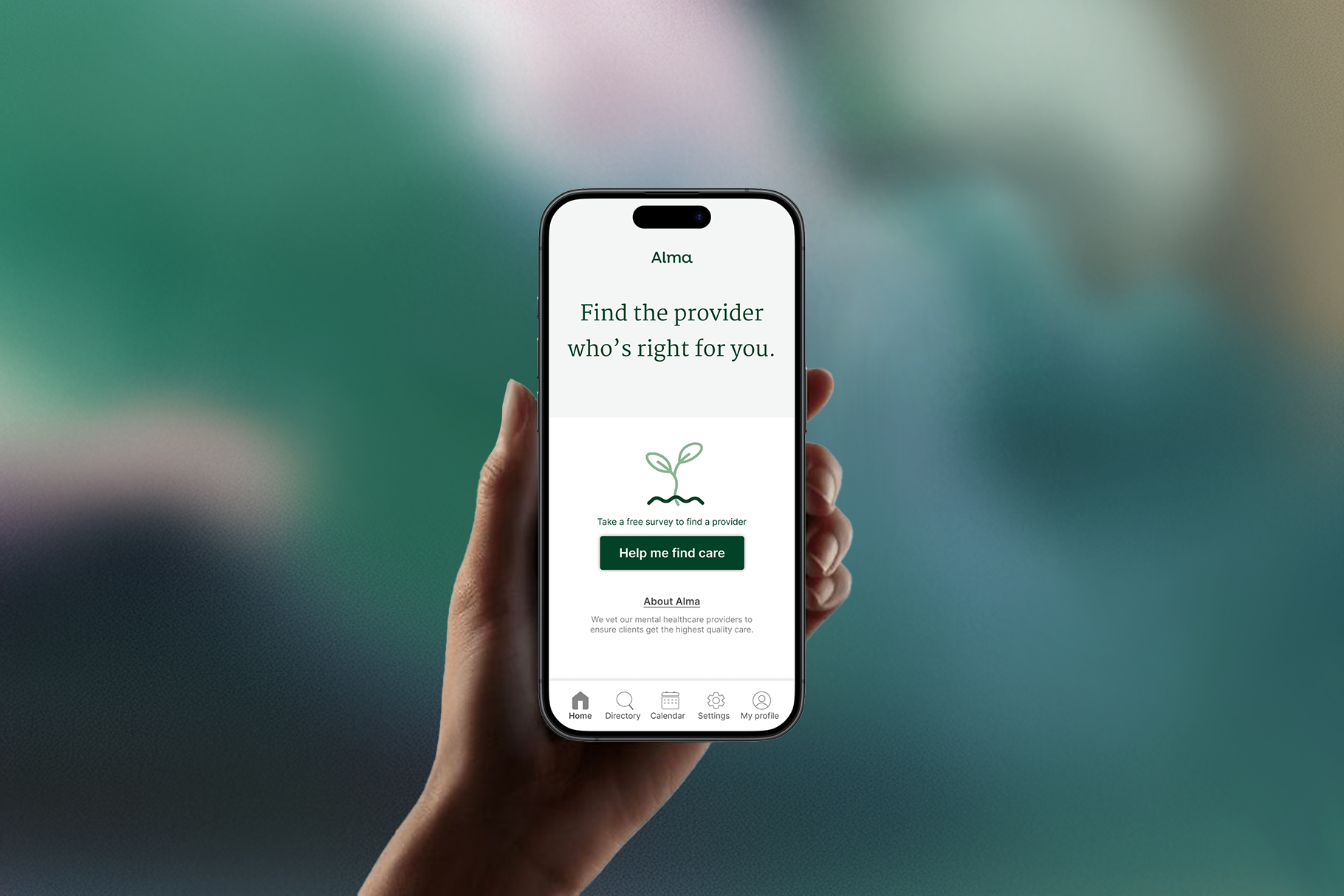

How might we make mental healthcare more accessible for older people by making the first barrier-of-entry more intuitive and efficient?
4 weeks - 1 Product Designer
*Note: This was a conceptual project and is unaffiliated with Alma.
User research, design, prototyping
Tools: Figma, Adobe Premiere Pro, Illustrator, Photoshop, Google Suite, Microsoft Suite
The users
Adults between 65-80 years old who are looking for mental healthcare providers.
The product
Alma is on a mission to simplify access to high-quality, affordable mental health care. The growing older population is deserving of a product that fits their needs, just like any other person.
Process
Initially, I interviewed a wide range of users. Through these interviews, I noticed the users who had the most problems navigating through the screening survey were the folks 65 and older. After this realization, I solely interviewed people who are 65 and up. I wanted to understand the struggles and needs of older people looking for mental healthcare providers. My solution of the Alma mobile app aims to make searching and finding mental healthcare providers easier for older people, who may not be as digitally-literate and who are eager to set up initial consultations. I hope the mobile app breaks more barriers for older people who are in need of mental healthcare.
The problem
Mental healthcare accessibility for people over 65 is significantly hindered by digital barriers. Alma's lack of a mobile app forces users to navigate a browser-based survey on their phones, leading to widespread frustration. User research revealed that 80% of participants encountered accessibility issues during the survey process. Specific pain points included difficulty pressing buttons, confusion about survey questions, and navigation challenges. These usability problems not only impede the survey completion but also create a discouraging experience for older adults seeking mental health support, potentially deterring them from accessing much-needed care.
The goal
Design a product to help make the mental health provider search more accessible to people who are between the age of 65 and 80.
Why the older population?
As of 2022, 17.3% of the US population was age 65 and older [1]. This percentage represents nearly 58 million adults in this age group [1]. Projections suggest that by 2030, when all baby boomers will be over 65, older adults will make up about 21% of the population [1]. By 2040, this is expected to reach 22% [1].
Population - Age 65+ Trends
Percentage of population age 65 and older
Our older population is growing quickly, as technology continues to rapidly advance, it is important for us to consider the growing digital literacy gap and actively try to minimize it. Minimizing the gap will help combat social isolation, improve health outcomes, empower independence, and increase awareness of accommodating age-related challenges across applications.
Why mental healthcare?
Over 20% of adults over 60 have some type of mental or neurological disorder, indicating a significant need for mental health support in this population [2]. The proportion of older adults in the US population has been growing, with projections suggesting that by 2030, older adults will make up about 21% of the population [3]. This demographic shift emphasizes the importance of addressing their mental health needs.
Why the survey?
As the first interactive element that users face on their journey to find a mental health care provider who is a good match, it is important to make these steps as simple, digestible, and intuitive as possible.
Competitors
This analysis compares Alma to several prominent online therapy platforms. Each platform has unique features and strengths that differentiate it in the online therapy market.
Alma's Position
Alma is primarily a therapist network that allows users to search for therapists based on various criteria such as identity, specialty, and therapeutic approach. It is free for users seeking therapists, but therapists pay a fee to be listed. Alma's focus on providing a diverse and inclusive directory of therapists is a key strength.
Conclusion
Each platform has distinct features that cater to different user needs. Alma's strength lies in its inclusive therapist directory, while platforms like BetterHelp and Talkspace offer extensive online therapy services with unique features such as unlimited messaging and comprehensive care options. Understanding these differentiators can help Alma position itself effectively in the competitive landscape of online mental health services.

Users at the center
To refine the scope of the Alma app project and prioritize key changes, user feedback was organized into four categories: Says, Thinks, Does, and Feels. This visual map helped identify user insights and patterns. Critical accessibility issues were highlighted with red dot stickers and marked high-frequency concerns with gold star stickers, ensuring that the most pressing user needs were clearly identified and addressed.
Firstly, I focused on the accessibility concerns that users mentioned. These were comments such as the zip code autofill and type feature not working, misclicking insurance providers from the dropdown, and font size issues. Outside of accessibility, the most popular comments on the app were about the trustworthiness of Alma, unsureness about Medicare being accepted, and questioning why the therapists they were matched to were compatible.
Sue is a typical user within the older age range. She has a loving, supportive family, who cares for her, but she is finding that she needs extra emotional support as she explores the possibility of moving to a retirement community. She has a cellphone where she downloads a trusted app, Alma, to assist her in finding a mental healthcare provider that is well suited to her therapy goals as she makes this transition.

The solution


Design for all
According to the Web Content Accessibility Guidelines (WCAG), a minimum color contrast ratio of 4.5:1 for normal text and 3:1 for large text is recommended for web accessibility.
In designing the color scheme for this project, accessibility and readability were prioritized by following color contrast standards. The selected palette ensures optimal visibility for all users, including those with visual impairments. This color combination creates sufficient contrast between text and backgrounds, meeting WCAG 2.1 requirements. Dark text on light backgrounds and light text on dark backgrounds allow for clear distinctions between elements.
This approach not only enhances aesthetic appeal but also promotes inclusivity. Additionally, the same attention to accessibility was applied to spacing and target areas, ensuring that interactive elements are easily distinguishable for users with varying abilities, including those using assistive technologies.

Streamlining User Journeys
The focus was one critical user flow, the initial survey. This approach allowed for an in-depth study of this experience.
By narrowing the scope, a deeper dive into the nuances of user interaction was made possible, ensuring that each step in the process is intuitive and aligned with the users' needs.
This Information Architecture diagram illustrates the user journey. For the most part, this journey has been kept the same.

What else is new?
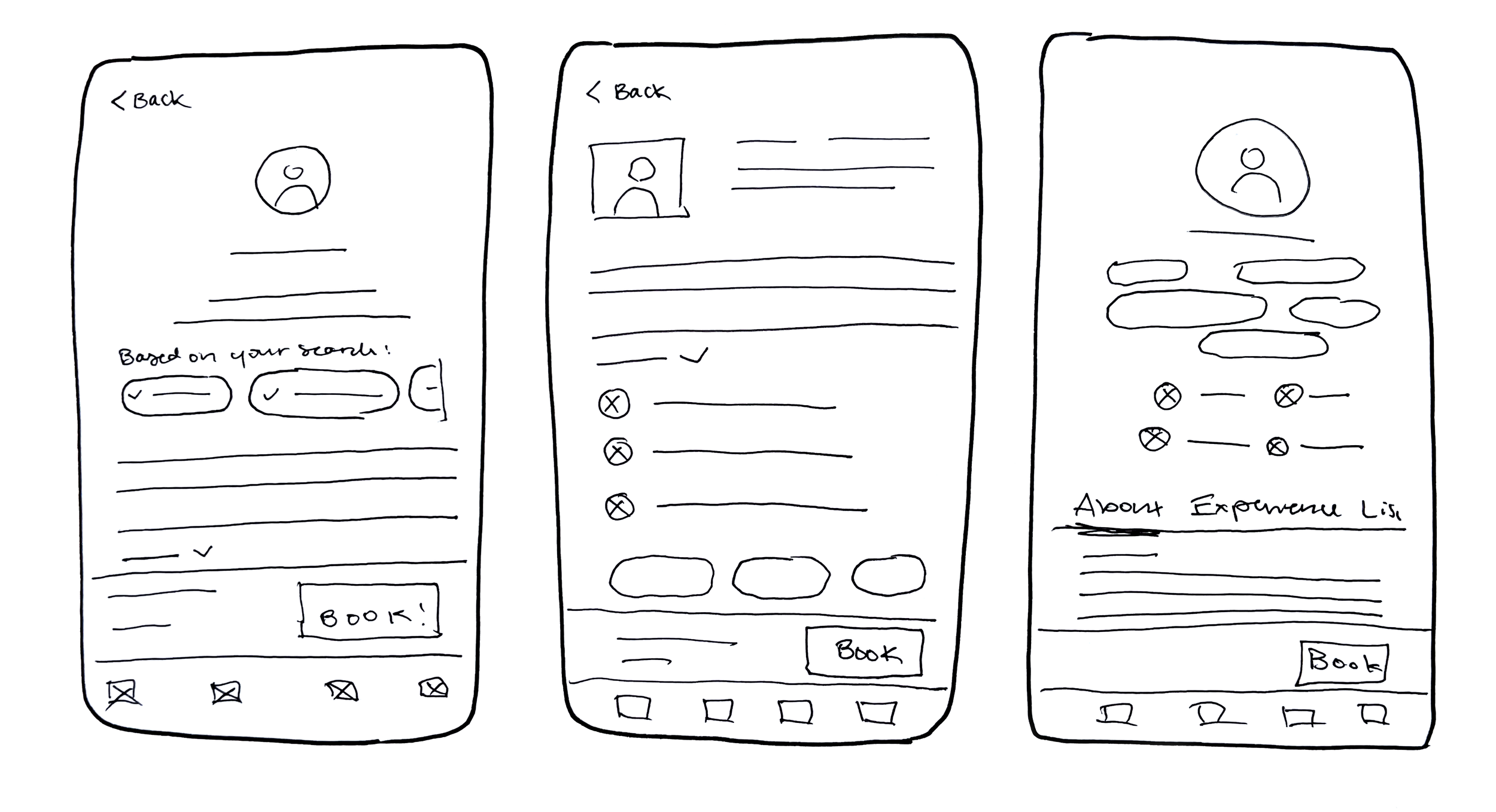
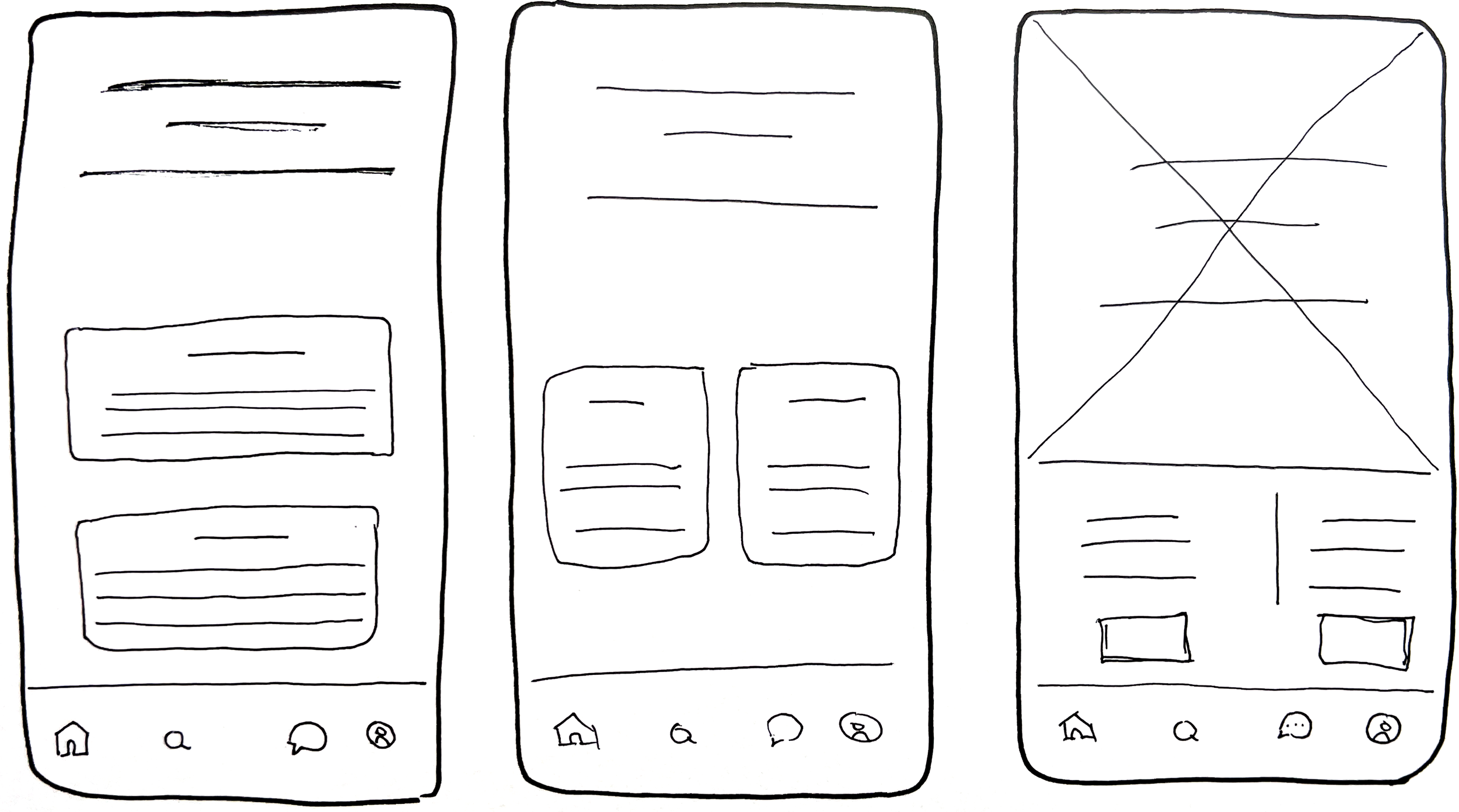
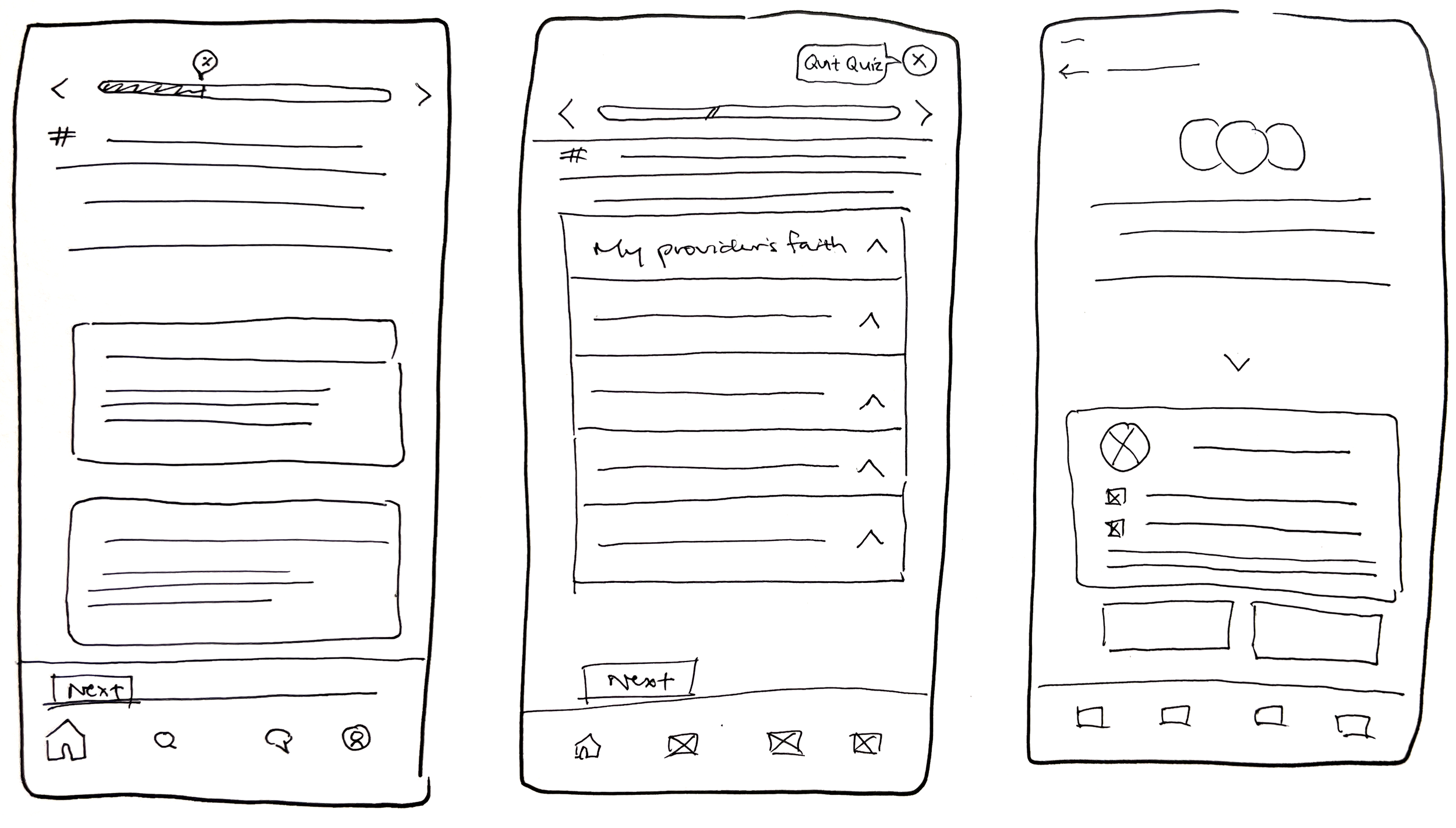
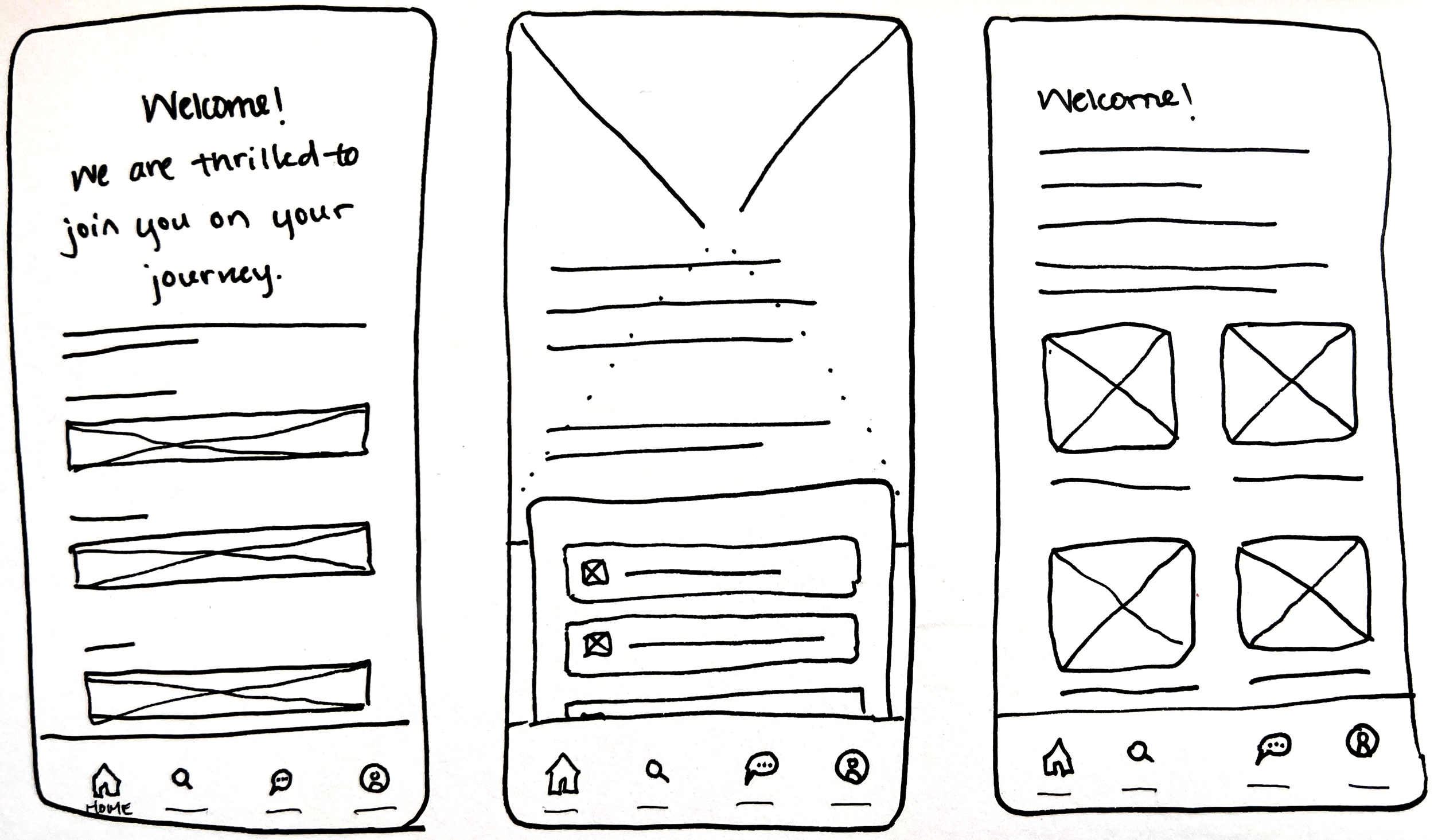
What I love about Alma
Alma is not just building a mental healthcare platform, but creating opportunities for people to get the care they need and that they may not otherwise have access to. They are also equipping their healthcare providers with the tools they need to thoughtfully and responsibly practice. It is designed by and for people on both the client and provider side.
Citations1. America's Health Rankings analysis of CDC WONDER, Single-Race Population Estimates, United Health Foundation, AmericasHealthRankings.org, accessed 2024.2.Institute of Health Metrics and Evaluation. Global Health Data Exchange (GHDx). https://vizhub.healthdata.org/gbd-results/, accessed 20 October 2023).3. Munira Z. Gunja, Arnav Shah, and Reginald D. Williams II, Comparing Older Adults’ Mental Health Needs and Access to Treatment in the U.S. and Other High-Income Countries (Commonwealth Fund, Jan. 2022). https://doi.org/10.26099/crks-9c82


















